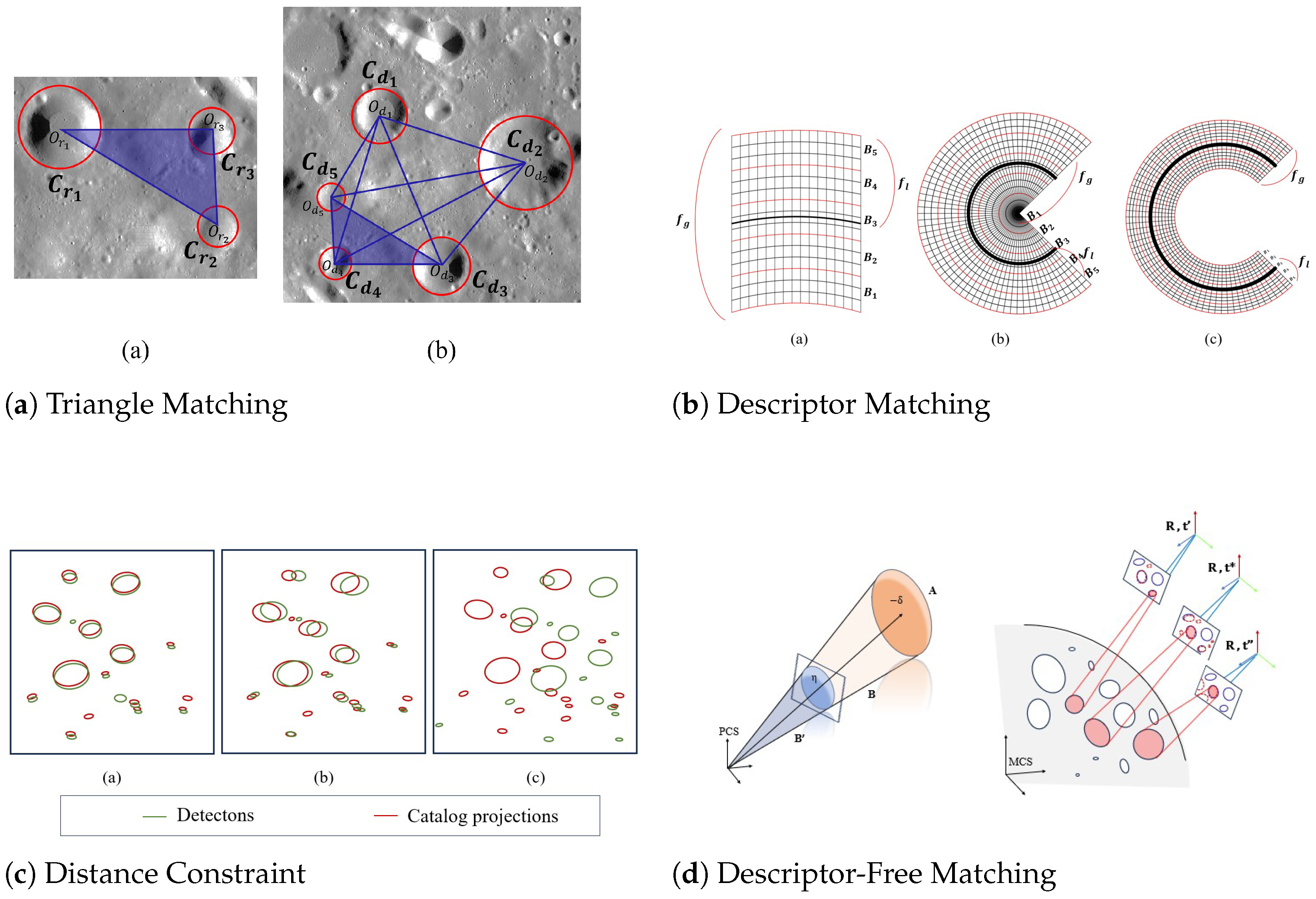A Review of Deep Space Image-Based Navigation Methods
Abstract
1. Introduction
2. Image-Based Navigation in Deep Space Missions
2.1. Sources of Remote Sensing Image Data in Deep Space Exploration Missions
2.1.1. Lunar Remote Sensing Images
2.1.2. Martian Remote Sensing Images
2.1.3. Mercury Remote Sensing Images
2.1.4. Asteroid Remote Sensing Images
2.2. Image-Based Navigation and Autonomous Landing Technology in Deep Space Exploration Missions
2.3. Challenges of Deep Space Image-Based Navigation
2.3.1. Data Scarcity
2.3.2. Environmental Complexity
2.3.3. Challenges of Feature Extraction and Matching
2.3.4. Computational Resource and Real-Time Requirements
3. Key Technologies of Deep Space Image-Based Navigation
3.1. Surface Feature Extraction
3.2. Crater Detection Methods
3.2.1. Unsupervised Crater Detection Algorithms
3.2.2. Crater Detection Algorithms Based on Machine Learning
3.2.3. Crater Detection Algorithms Based on Deep Learning
- (1)
- Crater Detection Based on Semantic Segmentation
- (2)
- Crater Detection Based on Object Detection
- (3)
- Hybrid Methods Combining Traditional Algorithms with Deep Learning
3.3. Crater Matching Algorithms and Localization
3.3.1. Crater Matching Algorithms with Prior Pose Information
3.3.2. Crater Matching Algorithms Without Prior Pose
4. Discussion and Future Directions
4.1. Intelligent Evolution of Image Navigation Systems
4.2. Enhanced Robustness in Complex Environments
4.3. Hardware Evolution for Autonomous Navigation Systems
4.4. Cross-Mission Adaptability and Multi-Body Generalization
5. Conclusions
Author Contributions
Funding
Institutional Review Board Statement
Informed Consent Statement
Conflicts of Interest
Abbreviations
| DOM | Digital Orthophoto Map |
| DEM | Digital Elevation Model |
| DIM | Digital Image Map |
| LOLA | Lunar Orbiter Laser Altimeter |
| LROC | Lunar Reconnaissance Orbiter Camera |
| OHRC | Orbiter High-Resolution Camera |
| SAR | Synthetic Aperture Radar |
| NavCam | Navigation Camera |
| MDIS | Mercury Dual-Imaging System |
| MLA | Mercury Laser Altimeter |
| NFT | Natural Feature Tracking System |
| EKF | Extended Kalman Filter |
| LVS | Landing Vision System |
| IMU | Inertial Measurement Unit |
| TRN | Terrain-Relative Navigation |
| ELVIS | Enhanced Landing Vision System |
| MRL | Map-Relative Localization |
| VO | Visual Odometry |
| PnP | Perspective-n-Point |
| DPOS | Distributed Position and Orientation System |
| SVM | Support Vector Machine |
| RF | Random Forest |
| DT | Decision Tree |
| PCA | Principal Component Analysis |
| CNN | Convolutional Neural Network |
| SAM | Segment Anything Model |
References
- Zhang, Y.; Li, P.; Quan, J.; Li, L.; Zhang, G.; Zhou, D. Progress, challenges, and prospects of soft robotics for space applications. Adv. Intell. Syst. 2023, 5, 2200071. [Google Scholar] [CrossRef]
- Turan, E.; Speretta, S.; Gill, E. Autonomous navigation for deep space small satellites: Scientific and technological advances. Acta Astronaut. 2022, 193, 56–74. [Google Scholar] [CrossRef]
- Ji, J.H.; Wang, S. China’s Future Missions for Deep Space Exploration and Exoplanet Space Survey by 2030. Chin. J. Space Sci. 2020, 40, 729–731. [Google Scholar] [CrossRef]
- Scorsoglio, A.; D’Ambrosio, A.; Ghilardi, L.; Gaudet, B.; Curti, F.; Furfaro, R. Image-based deep reinforcement meta-learning for autonomous lunar landing. J. Spacecr. Rocket. 2022, 59, 153–165. [Google Scholar] [CrossRef]
- Li., S.; Lu, R.; Zhang, L.; Peng, Y. Image processing algorithms for deep-space autonomous optical navigation. J. Navig. 2013, 66, 605–623. [Google Scholar] [CrossRef]
- Franzese, V.; Topputo, F. Celestial bodies far-range detection with deep-space CubeSats. Sensors 2023, 23, 4544. [Google Scholar] [CrossRef]
- Nozette, S.; Rustan, P.; Pleasance, L.P.; Kordas, J.F.; Lewis, I.T.; Park, H.S.; Priest, R.E.; Horan, D.M.; Regeon, P.; Lichtenberg, C.L.; et al. The Clementine mission to the Moon: Scientific overview. Science 1994, 266, 1835–1839. [Google Scholar] [CrossRef]
- Mcewen, A.S.; Robinson, M.S. Mapping of the Moon by Clementine. Adv. Space Res. 1997, 19, 1523–1533. [Google Scholar] [CrossRef]
- Smith, D.E.; Zuber, M.T.; Neumann, G.A.; Lemoine, F.G. Topography of the Moon from the Clementine lidar. J. Geophys. Res. Planets 1997, 102, 1591–1611. [Google Scholar] [CrossRef]
- Gaddis, L.; Isbell, C.; Staid, M.; Eliason, E.; Lee, E.M.; Weller, L.; Sucharski, T.; Lucey, P.; Blewett, D.; Hinrichs, J.; et al. The Clementine NIR Global Lunar Mosaic. NASA Planetary Data System (PDS) Dataset. PDS. 2007. Available online: https://pds-imaging.jpl.nasa.gov/ (accessed on 27 July 2025).
- Racca, G.D.; Marini, A.; Stagnaro, L.; Van Dooren, J.; Di Napoli, L.; Foing, B.H.; Lumb, R.; Volp, J.; Brinkmann, J.; Grünagel, R.; et al. SMART-1 mission description and development status. Planet. Space Sci. 2002, 50, 1323–1337. [Google Scholar] [CrossRef]
- Scholten, F.; Oberst, J.; Matz, K.D.; Roatsch, T.; Wählisch, M.; Speyerer, E.J.; Robinson, M.S. GLD100: The near-global lunar 100 m raster DTM from LROC WAC stereo image data. J. Geophys. Res. Planets 2012, 117, E00H14. [Google Scholar] [CrossRef]
- Speyerer, E.J.; Robinson, M.S.; Denevi, B.W.; Lroc, S.T. Lunar Reconnaissance Orbiter Camera global morphological map of the Moon. In Proceedings of the 42nd Annual Lunar and Planetary Science Conference, The Woodlands, TX, USA, 7–11 March 2011; No. 1608. p. 2387. [Google Scholar]
- Barker, M.K.; Mazarico, E.; Neumann, G.A.; Zuber, M.T.; Haruyama, J.; Smith, D.E. A new lunar digital elevation model from the Lunar Orbiter Laser Altimeter and SELENE Terrain Camera. Icarus 2016, 273, 346–355. [Google Scholar] [CrossRef]
- Haruyama, J.; Ohtake, M.; Matsunaga, T.; Morota, T.; Honda, C.; Yokota, Y.; Ogawa, Y.; Lism, W.G. Selene (Kaguya) terrain camera observation results of nominal mission period. In Proceedings of the 40th Annual Lunar and Planetary Science Conference, The Woodlands, TX, USA, 23–27 March 2009; p. 1553. [Google Scholar]
- Chowdhury, A.R.; Saxena, M.; Kumar, A.; Joshi, S.R.; Dagar, A.; Mittal, M.; Kirkire, S.; Desai, J.; Shah, D.; Karelia, J.C.; et al. Orbiter high resolution camera onboard Chandrayaan-2 orbiter. Curr. Sci. 2020, 118, 560–565. [Google Scholar] [CrossRef]
- Gupta, A.; Suresh, K.; Prashar, A.K.; Iyer, K.V.; Suhail, A.; Verma, S.; Islam, B.; Lalwani, H.K.; Srinivasan, T.P. High resolution DEM generation from Chandrayaan-2 orbiter high resolution camera images. 52nd Lunar Planet. Sci. Conf. 2021, 2548, 1396. [Google Scholar]
- Dagar, A.K.; Rajasekhar, R.P.; Nagori, R. Analysis of boulders population around a young crater using very high resolution image of Orbiter High Resolution Camera (OHRC) on board Chandrayaan-2 mission. Icarus 2022, 386, 115168. [Google Scholar] [CrossRef]
- Pelgrift, J.Y.; Nelson, D.S.; Adam, C.D.; Molina, G.; Hansen, M.; Hollister, A. In-flight calibration of the Intuitive Machines IM-1 optical navigation imagers. In Proceedings of the 4th Space Imaging Workshop (SIW 2024), Laurel, MD, USA, 7–9 October 2024. [Google Scholar]
- Shoer, J.; Mosher, T.; Mccaa, T.; Kwong, J.; Ringelberg, J.; Murrow, D. LunIR: A CubeSat spacecraft performing advanced infrared imaging of the lunar surface. In Proceedings of the 70th International Astronautical Congress (IAC 2019), 26th IAA Symposium on Small Satellite Missions (B4), Small Spacecraft for Deep-Space Exploration (8), Washington, DC, USA, 21–25 October 2019. Paper ID: IAC-19-B4.8.6x53460. [Google Scholar]
- Li, C.; Liu, J.; Ren, X.; Mou, L.; Zou, Y.; Zhang, H.; Lü, C.; Liu, J.; Zuo, W.; Su, Y.; et al. The global image of the Moon obtained by the Chang’E-1: Data processing and lunar cartography. Sci. China Earth Sci. 2010, 53, 1091–1102. [Google Scholar] [CrossRef]
- Li, C.; Ren, X.; Liu, J.; Zou, X.; Mu, L.; Wang, J.; Shu, R.; Zou, Y.; Zhang, H.; Lü, C.; et al. Laser altimetry data of Chang’E-1 and the global lunar DEM model. Sci. China Earth Sci. 2010, 53, 1582–1593. [Google Scholar] [CrossRef]
- Li, C.; Liu, J.; Ren, X.; Yan, W.; Zuo, W.; Mu, L.; Zhang, H.; Su, Y.; Wen, W.; Tan, X.; et al. Lunar global high-precision terrain reconstruction based on Chang’E-2 stereo images. Geomat. Inf. Sci. Wuhan Univ. 2018, 43, 485–495. [Google Scholar]
- Liu, J.; Ren, X.; Tan, X.; Li, C. Lunar image data preprocessing and quality evaluation of CCD stereo camera on Chang’E-2. Geomat. Inf. Sci. Wuhan Univ. 2013, 38, 186–190. [Google Scholar]
- Caplinger, M.A.; Malin, M.C. Mars orbiter camera geodesy campaign. J. Geophys. Res. Planets 2001, 106, 23595–23606. [Google Scholar] [CrossRef]
- Fergason, R.L.; Hare, T.M.; Laura, J. HRSC and MOLA Blended Digital Elevation Model at 200 m v2. USGS Astrogeology Science Center, PDS Annex. 2018. Available online: https://astrogeology.usgs.gov/search/map/Mars/Viking/HRSC_MOLA_Blend (accessed on 27 July 2025).
- Christensen, P.R.; Bandfield, J.L.; Bell, J.F., III; Gorelick, N.; Hamilton, V.E.; Ivanov, A.; Jakosky, B.M.; Kieffer, H.H.; Lane, M.D.; Malin, M.C.; et al. Morphology and composition of the surface of Mars: Mars Odyssey THEMIS results. Science 2003, 300, 2056–2061. [Google Scholar] [CrossRef] [PubMed]
- McEwen, A.S.; Eliason, E.M.; Bergstrom, J.W.; Bridges, N.T.; Hansen, C.J.; Delamere, W.A.; Grant, J.A.; Gulick, V.C.; Herkenhoff, K.E.; Keszthelyi, L. Mars Reconnaissance Orbiter’s High Resolution Imaging Science Experiment (HiRISE). J. Geophys. Res. Planets 2007, 112, E05S02. [Google Scholar] [CrossRef]
- Kirk, R.L.; Howington-Kraus, E.; Rosiek, M.R.; Anderson, J.A.; Archinal, B.A.; Becker, K.J.; Cook, D.A.; Galuszka, D.M.; Geissler, P.E.; Hare, T.M.; et al. Ultrahigh resolution topographic mapping of Mars with MRO HiRISE stereo images: Meter-scale slopes of candidate Phoenix landing sites. J. Geophys. Res. Planets 2008, 113, E00A24. [Google Scholar] [CrossRef]
- Johnson, A.E.; Aaron, S.B.; Ansari, H.; Bergh, C.; Bourdu, H.; Butler, J.; Chang, J.; Cheng, R.; Cheng, Y.; Clark, K.; et al. Mars 2020 lander vision system flight performance. In Proceedings of the AIAA SciTech 2022 Forum, San Diego, CA, USA, 3–7 January 2022; Volume 1214. [Google Scholar]
- Bell, J.F., III; Maki, J.N.; Mehall, G.L.; Ravine, M.A.; Caplinger, M.A.; Bailey, Z.J.; Brylow, S.; Schaffner, J.A.; Kinch, K.M.; Madsen, M.B.; et al. The Mars 2020 perseverance rover mast camera zoom (Mastcam-Z) multispectral, stereoscopic imaging investigation. Space Sci. Rev. 2021, 217, 1–40. [Google Scholar] [CrossRef]
- Fergason, R.L.; Hare, T.M.; Mayer, D.P.; Galuszka, D.M.; Redding, B.L.; Smith, E.D.; Shinaman, J.R.; Cheng, Y.; Otero, R.E. Mars 2020 terrain relative navigation flight product generation: Digital terrain model and orthorectified image mosaic. In Proceedings of the 51st Lunar and Planetary Science Conference, 2020, No. 2326. The Woodlands, TX, USA, 16–20 March 2020. [Google Scholar]
- Gwinner, K.; Scholten, F.; Preusker, F.; Elgner, S.; Roatsch, T.; Spiegel, M.; Schmidt, R.; Oberst, J.; Jaumann, R.; Heipke, C. Topography of Mars from global mapping by HRSC high-resolution digital terrain models and orthoimages: Characteristics and performance. Earth Planet. Sci. Lett. 2010, 294, 506–519. [Google Scholar] [CrossRef]
- Ody, A.; Poulet, F.; Langevin, Y.; Bibring, J.-P.; Bellucci, G.; Altieri, F.; Gondet, B.; Vincendon, M.; Carter, J.; Manaud, N.C.E.J. Global maps of anhydrous minerals at the surface of Mars from OMEGA/MEx. J. Geophys. Res. Planets 2012, 117, E00J14. [Google Scholar] [CrossRef]
- Liang, X.; Chen, W.; Cao, Z.; Wu, F.; Lyu, W.; Song, Y.; Li, D.; Yu, C.; Zhang, L.; Wang, L. The navigation and terrain cameras on the Tianwen-1 Mars rover. Space Sci. Rev. 2021, 217, 37. [Google Scholar] [CrossRef]
- Becker, K.J.; Weller, L.A.; Edmundson, K.L.; Becker, T.L.; Robinson, M.S.; Enns, A.C.; Solomon, S.C. Global controlled mosaic of Mercury from MESSENGER orbital images. In Proceedings of the 43rd Annual Lunar and Planetary Science Conference, The Woodlands, TX, USA, 19–23 March 2012; No. 1659. p. 2654. [Google Scholar]
- Roatsch, T.; Kersten, E.; Matz, K.-D.; Preusker, F.; Scholten, F.; Jaumann, R.; Raymond, C.A.; Russell, C.T. High-resolution ceres low altitude mapping orbit atlas derived from dawn framing camera images. Planet. Space Sci. 2017, 140, 74–79. [Google Scholar] [CrossRef]
- Watanabe, S.; Tsuda, Y.; Yoshikawa, M.; Tanaka, S.; Saiki, T.; Nakazawa, S. Hayabusa2 mission overview. Space Sci. Rev. 2017, 208, 3–16. [Google Scholar] [CrossRef]
- Preusker, F.; Scholten, F.; Elgner, S.; Matz, K.-D.; Kameda, S.; Roatsch, T.; Jaumann, R.; Sugita, S.; Honda, R.; Morota, T.; et al. The MASCOT landing area on asteroid (162173) Ryugu: Stereo-photogrammetric analysis using images of the ONC onboard the Hayabusa2 spacecraft. Astron. Astrophys. 2019, 632, L4. [Google Scholar] [CrossRef]
- Tatsumi, E.; Domingue, D.; Schröder, S.; Yokota, Y.; Kuroda, D.; Ishiguro, M.; Hasegawa, S.; Hiroi, T.; Honda, R.; Hemmi, R.; et al. Global photometric properties of (162173) Ryugu. Astron. Astrophys. 2020, 639, A83. [Google Scholar] [CrossRef]
- Becker, K.J.; Edmundson, K.L. Control of OSIRIS-REx OTES observations using OCAMS TAG images. arXiv 2024, arXiv:2401.12177. [Google Scholar] [CrossRef]
- Williams, B.G. Technical challenges and results for navigation of NEAR Shoemaker. Johns Hopkins APL Tech. Dig. 2002, 23, 1. [Google Scholar]
- Ogawa, N.; Terui, F.; Yasuda, S.; Matsushima, K.; Masuda, T.; Sano, J.; Hihara, H.; Matsuhisa, T.; Danno, S.; Yamada, M.; et al. Image-based autonomous navigation of Hayabusa2 using artificial landmarks: Design and in-flight results in landing operations on asteroid Ryugu. In Proceedings of the AIAA Scitech 2020 Forum, Orlando, FL, USA, 6–10 January 2020. [Google Scholar]
- Mario, C.; Norman, C.; Miller, C.; Olds, R.; Palmer, E.; Weirich, J.; Lorenz, D.; Lauretta, D. Image correlation performance prediction for autonomous navigation of OSIRIS-REx asteroid sample collection. In Proceedings of the 43rd Annual AAS Guidance, Navigation & Control Conference, Breckenridge, CO, USA, 1–3 February 2020. AAS 20-087. [Google Scholar]
- Miller, C.; Olds, R.; Norman, C.; Gonzales, S.; Mario, C.; Lauretta, D.S. On orbit evaluation of natural feature tracking for OSIRIS-REx sample collection. In Proceedings of the 43rd Annual AAS Guidance, Navigation & Control Conference, Breckenridge, CO, USA, 1–3 February 2020. AAS 20-154. [Google Scholar]
- Lorenz, D.A.; Olds, R.; May, A.; Mario, C.; Perry, M.E.; Palmer, E.E.; Daly, M. Lessons learned from OSIRIS-REx autonomous navigation using natural feature tracking. In Proceedings of the 2017 IEEE Aerospace Conference, Big Sky, MT, USA, 1–12 March 2017. [Google Scholar]
- Maki, J.N.; Gruel, D.; McKinney, C.; Ravine, M.A.; Morales, M.; Lee, D.; Willson, R.; Copley-Woods, D.; Valvo, M.; Goodsall, T.; et al. The Mars 2020 engineering cameras and microphone on the Perseverance rover: A next-generation imaging system for Mars exploration. Space Sci. Rev. 2020, 216, 9. [Google Scholar] [CrossRef]
- Setterfield, T.P.; Conway, D.; Chen, P.-T.; Clouse, D.; Trawny, N.; Johnson, A.E.; Khattak, S.; Ebadi, K.; Massone, G.; Cheng, Y.; et al. Enhanced Lander Vision System (ELViS) algorithms for pinpoint landing of the Mars Sample Retrieval Lander. In Proceedings of the AIAA SCITECH 2024 Forum, Orlando, FL, USA, 8–12 January 2024; p. 0315. [Google Scholar]
- Maru, Y.; Morikawa, S.; Kawano, T. Evaluation of landing stability of two-step landing method for small lunar-planetary lander. In Proceedings of the International Symposium on Space Flight Dynamics (ISSFD), Darmstadt, Germany, 22–26 April 2024. [Google Scholar]
- Takino, T.; Nomura, I.; Moribe, M.; Kamata, H.; Takadama, K.; Fukuda, S.; Sawai, S.; Sakai, S. Crater detection method using principal component analysis and its evaluation. Trans. Jpn. Soc. Aeronaut. Space Sci. Aerosp. Technol. Jpn. 2016, 14, Pt_7–Pt_14. [Google Scholar] [CrossRef][Green Version]
- Ishii, H.; Takadama, K.; Murata, A.; Uwano, F.; Tatsumi, T.; Umenai, Y.; Matsumoto, K.; Kamata, H.; Ishida, T.; Fukuda, S.; et al. The robust spacecraft location estimation algorithm toward the misdetection crater and the undetected crater in SLIM. In Proceedings of the 31st International Symposium on Space Technology and Science (ISTS), Ehime, Japan, 3–9 June 2017. Paper No. ISTS-2017-d-067/ISSFD-2017-067. [Google Scholar]
- Ishida, T.; Fukuda, S.; Kariya, K.; Kamata, H.; Takadama, K.; Kojima, H.; Sawai, S.; Sakai, S. Vision-based navigation and obstacle detection flight results in SLIM lunar landing. Acta Astronaut. 2025, 226, 772–781. [Google Scholar] [CrossRef]
- Getchius, J.; Renshaw, D.; Posada, D.; Henderson, T.; Hong, L.; Ge, S.; Molina, G. Hazard detection and avoidance for the nova-c lander. In Proceedings of the 44th Annual American Astronautical Society Guidance, Navigation, and Control Conference, Charlotte, NC, USA, 7–11 August 2022; Springer International Publishing: Cham, Switzerland, 2022; pp. 921–943. [Google Scholar]
- Molina, G.; Hansen, M.; Getchius, J.; Christensen, R.; Christian, J.A.; Stewart, S.; Crain, T. Visual odometry for precision lunar landing. In Proceedings of the 44th Annual American Astronautical Society Guidance, Navigation, and Control Conference, Charlotte, NC, USA, 7–11 August 2022; Springer International Publishing: Cham, Switzerland, 2022; pp. 1021–1042. [Google Scholar]
- Thrasher, A.C.; Christian, J.A.; Molina, G.; Hansen, M.; Pelgrift, J.Y.; Nelson, D.S. Lunar crater identification using triangle reprojection. In Proceedings of the AAS/AIAA 2023, Big Sky, MT, USA, 13–17 August 2023. [Google Scholar]
- Zhang, H.; Li, J.; Guan, Y.; Huang, X. Autonomous Navigation for Powered Descent of Chang’e-3 Lander. Control Theory Appl. 2014, 31, 1686–1694. [Google Scholar]
- Yu, P.; Zhang, H.; Li, J.; Guan, Y.; Wang, L.; Zhao, Y.; Chen, Y.; Yang, W.; Yu, J.; Wang, H.; et al. Design and Implementation of the GNC System for the Chang’e-5 Lander-Ascent Combination. Sci. China Technol. Sci. 2021, 51, 763–777. [Google Scholar]
- Song, J.; Rondao, D.; Aouf, N. Deep learning-based spacecraft relative navigation methods: A survey. Acta Astronaut. 2022, 191, 22–40. [Google Scholar] [CrossRef]
- Bechini, M.; Lavagna, M.; Lunghi, P. Dataset generation and validation for spacecraft pose estimation via monocular images processing. Acta Astronaut. 2023, 204, 358–369. [Google Scholar] [CrossRef]
- Kloos, J.L.; Moores, J.E.; Godin, P.J.; Cloutis, E. Illumination conditions within permanently shadowed regions at the lunar poles: Implications for in-situ passive remote sensing. Acta Astronaut. 2021, 178, 432–451. [Google Scholar] [CrossRef]
- Christian, J.A. A tutorial on horizon-based optical navigation and attitude determination with space imaging systems. IEEE Access 2021, 9, 19819–19853. [Google Scholar] [CrossRef]
- Russo, A.; Lax, G. Using artificial intelligence for space challenges: A survey. Appl. Sci. 2022, 12, 5106. [Google Scholar] [CrossRef]
- Chen, D.; Hu, F.; Zhang, L.; Wu, Y.; Du, J.; Peethambaran, J. Impact crater recognition methods: A review. Sci. China Earth Sci. 2024, 1, 24. [Google Scholar] [CrossRef]
- Zhong, J.; Yan, J.; Li, M.; Barriot, J.P. A deep learning-based local feature extraction method for improved image matching and surface reconstruction from Yutu-2 PCAM images on the Moon. ISPRS J. Photogramm. Remote Sens. 2023, 206, 16–29. [Google Scholar] [CrossRef]
- Zhang, C.; Liang, X.; Wu, F.; Zhang, L. Overview of optical navigation technology development for asteroid descent and landing stage. Infrared Laser Eng. 2020, 49, 20201009. (In Chinese) [Google Scholar] [CrossRef]
- Sawai, S.; Scheeres, D.J.; Kawaguchi, J.; Yoshizawa, N.; Ogawawara, M. Development of a target marker for landing on asteroids. J. Spacecr. Rocket. 2001, 38, 601–608. [Google Scholar] [CrossRef]
- Xu, L.; Jiang, J.; Ma, Y. A review of vision-based navigation technology based on impact craters. Laser Optoelectron. Prog. 2023, 60, 1106013. (In Chinese) [Google Scholar]
- Tewari, A.; Prateek, K.; Singh, A.; Khanna, N. Deep learning based systems for crater detection: A review. arXiv 2023, arXiv:2310.07727. [Google Scholar] [CrossRef]
- Robbins, S.J.; Hynek, B.M. A new global database of Mars impact craters≥ 1 km: 1. Database Creat. Prop. Parameters [J. Geophys. Res. Planets] 2012, 117, E05XXXX. [Google Scholar] [CrossRef]
- Kneissl., T.; van Gasselt, S.; Neukum, G. Map-projection-independent crater size-frequency determination in GIS environments—New software tool for ArcGIS. Planet. Space Sci. 2011, 59, 1243–1254. [Google Scholar] [CrossRef]
- Heyer, T.; Iqbal, W.; Oetting, A.; Hiesinger, H.; van der Bogert, C.H.; Schmedemann, N. A comparative analysis of global lunar crater catalogs using OpenCraterTool–An open source tool to determine and compare crater size-frequency measurements. Planet. Space Sci. 2023, 231, 105687. [Google Scholar] [CrossRef]
- Canny, J. A computational approach to edge detection. IEEE Trans. Pattern Anal. Mach. Intell. 1986, 6, 679–698. [Google Scholar] [CrossRef]
- Cheng, Y.; Miller, J.K. Autonomous landmark based spacecraft navigation system. AAS/AIAA Astrodyn. Spec. Conf. 2003, 114, 1769–1783. [Google Scholar]
- Zuo, W.; Li, C.; Yu, L.; Zhang, Z.; Wang, R.; Zeng, X.; Liu, Y.; Xiong, Y. Shadow–highlight feature matching automatic small crater recognition using high-resolution digital orthophoto map from Chang’E missions. Acta Geochim. 2019, 38, 541–554. [Google Scholar] [CrossRef]
- Maass, B. Robust approximation of image illumination direction in a segmentation-based crater detection algorithm for spacecraft navigation. CEAS Space J. 2016, 8, 303–314. [Google Scholar] [CrossRef][Green Version]
- Maass, B.; Krüger, H.; Theil, S. An edge-free, scale-, pose- and illumination-invariant approach to crater detection for spacecraft navigation. In Proceedings of the 2011 7th International Symposium on Image and Signal Processing and Analysis (ISPA), Dubrovnik, Croatia, 4–6 September 2011; pp. 603–608. [Google Scholar]
- Bandeira, L.; Ding, W.; Stepinski, T.F. Detection of sub-kilometer craters in high-resolution planetary images using shape and texture features. Adv. Space Res. 2012, 49, 64–74. [Google Scholar] [CrossRef]
- Wang, Y.; Yang, G.; Guo, L. A novel sparse boosting method for crater detection in the high-resolution planetary image. Adv. Space Res. 2015, 56, 29–41. [Google Scholar] [CrossRef]
- Pedrosa, M.M.; Azevedo, S.C.D.; Silva, E.A.D.; Dias, M.A. Improved automatic impact crater detection on Mars based on morphological image processing and template matching. J. Spat. Sci. 2017, 62, 219–231. [Google Scholar] [CrossRef]
- Woicke, S.; Gonzalez, A.M.; El-Hajj, I. Comparison of crater-detection algorithms for terrain-relative navigation. In Proceedings of the AIAA Scitech Forum, Kissimmee, FL, USA, 8–12 January 2018. [Google Scholar]
- Chen, M.; Liu, D.; Qian, K.; Li, J.; Lei, M.; Zhou, Y. Lunar crater detection based on terrain analysis and mathematical morphology methods using digital elevation models. IEEE Trans. Geosci. Remote Sens. 2018, 56, 3681–3692. [Google Scholar] [CrossRef]
- Magee, M.; Chapman, C.R.; Dellenback, S.W.; Enke, B.; Merline, W.J.; Rigney, M.P. Automated identification of Martian craters using image processing. In Proceedings of the Lunar and Planetary Science Conference, Houston, TX, USA, 17–21 March 2003; p. 1756. [Google Scholar]
- Singh, L.; Lim, S. On lunar on-orbit vision-based navigation: Terrain mapping, feature tracking driven EKF. In Proceedings of the AIAA Guidance, Navigation and Control Conference and Exhibit, Honolulu, HI, USA, 18–21 August 2008; AIAA Press: Reston, VA, USA, 2008; p. 6834. [Google Scholar]
- Krøgli, S.O. Automatic Extraction of Potential Impact Structures from Geospatial Data: Examples from Finnmark, Northern Norway. Ph.D. Thesis, University of Oslo, Oslo, Norway, 2010. [Google Scholar]
- Degirmenci, M.; Ashyralyyev, S. Impact Crater Detection on Mars Digital Elevation and Image Model; Middle East Technical University: Ankara, Turkey, 2010. [Google Scholar]
- Wang, S.; Li, W. GeoAI in terrain analysis: Enabling multi-source deep learning and data fusion for natural feature detection. Comput. Environ. Urban Syst. 2021, 90, 101715. [Google Scholar] [CrossRef]
- Ding, M.; Cao, Y.; Wu, Q. Crater detection in lunar grayscale images. J. Appl. Sci. 2009, 27, 156–160. (In Chinese) [Google Scholar] [CrossRef]
- Stepinski, T.F.; Mendenhall, M.P.; Bue, B.D. Machine cataloging of impact craters on Mars. Icarus 2009, 203, 77–87. [Google Scholar] [CrossRef]
- Urbach, E.R.; Stepinski, T.F. Automatic detection of sub-km craters in high resolution planetary images. Planet. Space Sci. 2009, 57, 880–887. [Google Scholar] [CrossRef]
- Liu, Q.; Cheng, W.; Yan, G.; Zhao, Y.; Liu, J. A machine learning approach to crater classification from topographic data. Remote Sens. 2019, 11, 2594. [Google Scholar] [CrossRef]
- Ronneberger, O.; Fischer, P.; Brox, T. U-net: Convolutional networks for biomedical image segmentation. In Proceedings of the Medical Image Computing and Computer-Assisted Intervention–MICCAI 2015: 18th International Conference, Munich, Germany, 5–9 October 2015; Proceedings, Part III, 18. Springer International Publishing: Berlin/Heidelberg, Germany, 2015; pp. 234–241. [Google Scholar]
- Jia, Y.; Liu, L.; Zhang, C. Moon impact crater detection using nested attention mechanism based UNet++. IEEE Access 2021, 9, 44107–44116. [Google Scholar] [CrossRef]
- Silburt, A.; Head, J.W.; Povilaitis, R. Lunar crater identification via deep learning. J. Geophys. Res. Planets 2019, 124, 1121–1134. [Google Scholar] [CrossRef]
- Head, J.W.; Fassett, C.I.; Kadish, S.J.; Smith, D.E.; Zuber, M.T.; Neumann, G.A.; Mazarico, E. Global distribution of large lunar craters: Implications for resurfacing and impactor populations. Science 2010, 329, 1504–1507. [Google Scholar] [CrossRef]
- Povilaitis, R.Z.; Robinson, M.S.; Van der Bogert, C.H.; Hiesinger, H.; Meyer, H.M.; Ostrach, L.R. Crater density differences: Exploring regional resurfacing, secondary crater populations, and crater saturation equilibrium on the Moon. Planet. Space Sci. 2018, 162, 41–51. [Google Scholar] [CrossRef]
- Lee, C. Automated crater detection on Mars using deep learning. Planet. Space Sci. 2019, 170, 16–28. [Google Scholar] [CrossRef]
- DeLatte, D.M.; Crites, S.T.; Guttenberg, N.; Tasker, E.J.; Yairi, T. Segmentation convolutional neural networks for automatic crater detection on Mars. IEEE J. Sel. Top. Appl. Earth Obs. Remote Sens. 2019, 12, 2944–2957. [Google Scholar]
- Wang, S.; Liu, W.; Zhang, L. An effective lunar crater recognition algorithm based on convolutional neural network. Space Sci. Technol. 2020, 40, 2694. [Google Scholar] [CrossRef]
- Lee, J.; Cho, Y.; Kim, H. Automated crater detection with human-level performance. Geophys. Res. Lett. 2021, 48, 210–220. [Google Scholar] [CrossRef]
- Jia, Y.; Su, Z.; Wan, G.; Liu, L.; Liu, J. Ae-transunet+: An enhanced hybrid transformer network for detection of lunar south small craters in LRO NAC images. IEEE Geosci. Remote Sens. Lett. 2023, 20, 6007405. [Google Scholar] [CrossRef]
- Giannakis, I.; Bhardwaj, A.; Sam, L.; Leontidis, G. A flexible deep learning crater detection scheme using Segment Anything Model (SAM). Icarus 2024, 408, 115797. [Google Scholar] [CrossRef]
- Mohite, R.R.; Janardan, S.K.; Janghel, R.R.; Govil, H. Precision in planetary exploration: Crater detection with residual U-Net34/50 and matching template algorithm. Planet. Space Sci. 2025, 255, 106029. [Google Scholar] [CrossRef]
- Miao, D.; Yan, J.; Tu, Z.; Barriot, J.-P. LCDNet: An Innovative Neural Network for Enhanced Lunar Crater Detection Using DEM Data. IEEE J. Sel. Top. Appl. Earth Obs. Remote Sens. 2024. [Google Scholar] [CrossRef]
- Girshick, R. Fast R-CNN. arXiv 2015, arXiv:1504.08083. [Google Scholar] [CrossRef]
- Ren, S.; He, K.; Girshick, R.; Sun, J. Faster R-CNN: Towards real-time object detection with region proposal networks. IEEE Trans. Pattern Anal. Mach. Intell. 2016, 39, 1137–1149. [Google Scholar] [CrossRef] [PubMed]
- Redmon, J. You only look once: Unified, real-time object detection. In Proceedings of the IEEE Conference on Computer Vision and Pattern Recognition, Las Vegas, NV, USA, 27–30 June 2016. [Google Scholar]
- Liu, W.; Anguelov, D.; Erhan, D.; Szegedy, C.; Reed, S.; Fu, C.-Y.; Berg, A.C. SSD: Single shot multibox detector. In Proceedings of the Computer Vision–ECCV 2016: 14th European Conference, Amsterdam, The Netherlands, 11–14 October 2016; Proceedings, Part I, 14. Springer International Publishing: Berlin/Heidelberg, Germany, 2016; pp. 21–37. [Google Scholar]
- Duan, K.; Bai, S.; Xie, L.; Qi, H.; Huang, Q.; Tian, Q. CenterNet: Keypoint triplets for object detection. In Proceedings of the IEEE/CVF International Conference on Computer Vision, Seoul, Republic of Korea, 27 October–2 November 2019; pp. 6569–6578. [Google Scholar]
- Zhao, Y.; Lv, W.; Xu, S.; Wei, J.; Wang, G.; Dang, Q.; Liu, Y.; Chen, J. DETRs beat YOLOs on real-time object detection. In Proceedings of the IEEE/CVF Conference on Computer Vision and Pattern Recognition, Seattle, WA, USA, 16–22 June 2024; pp. 16965–16974. [Google Scholar]
- Martinez, L.; Schmidt, F.; Andrieu, F.; Bentley, M.; Talbot, H. Automatic crater detection and classification using Faster R-CNN. Copernicus Meetings 2024, EPSC2024-1005. [Google Scholar]
- Zhang, S.; Zhang, P.; Yang, J.; Kang, Z.; Cao, Z.; Yang, Z. Automatic detection for small-scale lunar impact crater using deep learning. Adv. Space Res. 2024, 73, 2175–2187. [Google Scholar] [CrossRef]
- La Grassa, R.; Cremonese, G.; Gallo, I.; Re, C.; Martellato, E. YOLOLens: A deep learning model based on super-resolution to enhance the crater detection of the planetary surfaces. Remote Sens. 2023, 15, 1171. [Google Scholar] [CrossRef]
- Guo, Y.; Wu, H.; Yang, S.; Cai, Z. Crater-DETR: A novel transformer network for crater detection based on dense supervision and multiscale fusion. IEEE Trans. Geosci. Remote Sens. 2024, 62, 5614112. [Google Scholar] [CrossRef]
- Yang, C.; Zhao, H.; Bruzzone, L.; Benediktsson, J.A.; Liang, Y.; Liu, B.; Zeng, X.; Guan, R.; Li, C.; Ouyang, Z. Lunar impact crater identification and age estimation with Chang’e data by deep and transfer learning. Nat. Commun. 2020, 11, 6358. [Google Scholar] [CrossRef]
- Ali-Dib, M.; Menou, K.; Jackson, A.P.; Zhu, C.; Hammond, N. Automated crater shape retrieval using weakly-supervised deep learning. Icarus 2020, 345, 113749. [Google Scholar] [CrossRef]
- Liu, Y.; Lai, J.; Xie, M.; Zhao, J.; Zou, C.; Liu, C.; Qian, Y.; Deng, J. Identification of lunar craters in the Chang’e-5 landing region based on Kaguya TC Morning Map. Remote Sens. 2024, 16, 344. [Google Scholar] [CrossRef]
- Tewari, A.; Jain, V.; Khanna, N. Automatic crater shape retrieval using unsupervised and semi-supervised systems. Icarus 2024, 408, 115761. [Google Scholar] [CrossRef]
- Kilduff, T.; Machuca, P.; Rosengren, A.J. Crater detection for cislunar autonomous navigation through convolutional neural networks. In Proceedings of the AAS/AIAA Astrodynamics Specialist Conference, Big Sky, MT, USA, 13–17 August 2023. [Google Scholar]
- Emami, E.; Ahmad, T.; Bebis, G.; Nefian, A.; Fong, T. Crater detection using unsupervised algorithms and convolutional neural networks. IEEE Trans. Geosci. Remote Sens. 2019, 57, 5373–5383. [Google Scholar] [CrossRef]
- Christian, J.A.; Derksen, H.; Watkins, R. Lunar crater identification in digital images. J. Astronaut. Sci. 2021, 68, 1056–1144. [Google Scholar] [CrossRef]
- Solarna, D.; Gotelli, A.; Le Moigne, J.; Moser, G.; Serpico, S.B. Crater detection and registration of planetary images through marked point processes, multiscale decomposition, and region-based analysis. IEEE Trans. Geosci. Remote Sens. 2020, 58, 6039–6058. [Google Scholar] [CrossRef]
- Leroy, B.; Medioni, G.; Johnson, E.; Matthies, L. Crater detection for autonomous landing on asteroids. Image Vis. Comput. 2001, 19, 787–792. [Google Scholar] [CrossRef]
- Weismuller, T.; Caballero, D.; Leinz, M. Technology for autonomous optical planetary navigation and precision landing. In Proceedings of the AIAA Space Conference, Long Beach, CA, USA, 18–20 September 2007. [Google Scholar]
- Clerc, S.; Spigai, M.; Simard-Bilodeau, V. A crater detection and identification algorithm for autonomous lunar landing. IFAC Proc. Vol. 2010, 43, 527–532. [Google Scholar] [CrossRef]
- Harada, T.; Usami, R.; Takadama, K.; Kamata, H.; Ozawa, S.; Fukuda, S.; Sawai, S. Computational Time Reduction of Evolutionary Spacecraft Location Estimation toward Smart Lander for Investigating Moon. In Proceedings of the 11th International Symposium on Artificial Intelligence, Robotics and Automation in Space (i-SAIRAS2012); European Space Agency (ESA): Frascati, Italy, 2012. [Google Scholar]
- Sawai, S.; Fukuda, S.; Sakai, S.; Kushiki, K.; Arakawa, T.; Sato, E.; Tomiki, A.; Michigami, K.; Kawano, T.; Okazaki, S. Preliminary system design of small lunar landing demonstrator SLIM. Aerosp. Technol. Jpn. 2018, 17, 35–43. [Google Scholar] [CrossRef]
- Haruyama, J.; Sawai, S.; Mizuno, T.; Yoshimitsu, T.; Fukuda, S.; Nakatani, I. Exploration of lunar holes, possible skylights of underlying lava tubes, by smart lander for investigating moon (slim). Trans. Jpn. Soc. Aeronaut. Space Sci. Aerosp. Technol. Jpn. 2012, 10, Pk_7–Pk_10. [Google Scholar] [CrossRef]
- Yu, M.; Cui, H.; Tian, Y. A new approach based on crater detection and matching for visual navigation in planetary landing. Adv. Space Res. 2014, 53, 1810–1821. [Google Scholar] [CrossRef]
- Lu, T.; Hu, W.; Liu, C.; Yang, D. Relative pose estimation of a lander using crater detection and matching. Opt. Eng. 2016, 55, 1–25. [Google Scholar] [CrossRef]
- Shao, W.; Xie, J.; Cao, L.; Leng, J.; Wang, B. Crater matching algorithm based on feature descriptor. Adv. Space Res. 2020, 65, 616–629. [Google Scholar] [CrossRef]
- Maass, B.; Woicke, S.; Oliveira, W.M.; Razgus, B.; Krüger, H. Crater navigation system for autonomous precision landing on the moon. J. Guid. Control. Dyn. 2020, 43, 1414–1431. [Google Scholar] [CrossRef]
- Jin, M.; Shao, W. Crater triangle matching algorithm based on fused geometric and regional features. Aerospace 2024, 11, 417. [Google Scholar] [CrossRef]
- Chng, C.K.; Mcleod, S.; Rodda, M.; Chin, T.J. Crater identification by perspective cone alignment. Acta Astronaut. 2024, 224, 1–16. [Google Scholar] [CrossRef]
- Cheng, Y.; Ansar, A. Landmark based position estimation for pinpoint landing on Mars. In Proceedings of the 2005 IEEE International Conference on Robotics and Automation, Piscataway, NJ, USA, 18–22 April 2005; pp. 1573–1578. [Google Scholar]
- Hanak, C.; Crain, T.; Bishop, R. Crater identification algorithm for the lost in low lunar orbit scenario. In Proceedings of the 33rd Annual AAS Rocky Mountain Guidance and Control Conference, Springfield, VA, USA, 5–10 February 2010. [Google Scholar]
- Park, W.; Jung, Y.; Bang, H.; Ahn, J. Robust crater triangle matching algorithm for planetary landing navigation. J. Guid. Control. Dyn. 2019, 42, 402–410. [Google Scholar] [CrossRef]
- Doppenberg, W. Autonomous Lunar Orbit Navigation with Ellipse R-CNN; Delft University of Technology: Delft, The Netherlands, 2021. [Google Scholar]
- Xu, L.H.; Jiang, J.; Ma, Y. Ellipse crater recognition for lost-in-space scenario. Remote Sens. 2022, 14, 6027. [Google Scholar] [CrossRef]
- Wang, H.; Jiang, J.; Zhang, G. CraterIDNet: An end-to-end fully convolutional neural network for crater detection and identification in remotely sensed planetary images. Remote Sens. 2018, 10, 1067. [Google Scholar] [CrossRef]
- Lu, S.; Xu, R.; Li, Z.; Wang, B.; Zhao, Z. Lunar rover collaborated path planning with artificial potential field-based heuristic on deep reinforcement learning. Aerospace 2024, 11, 253. [Google Scholar] [CrossRef]
- Liu, W.; Wan, G.; Liu, J.; Cong, D. Path Planning for Lunar Rovers in Dynamic Environments: An Autonomous Navigation Framework Enhanced by Digital Twin-Based A*-D3QN. Aerospace 2025, 12, 517. [Google Scholar] [CrossRef]
- Tao, W.; Zhang, J.; Hu, H.; Zhang, J.; Sun, H.; Zeng, Z.; Song, J.; Wang, J. Intelligent navigation for the cruise phase of solar system boundary exploration based on Q-learning EKF. Complex Intell. Syst. 2024, 10, 2653–2672. [Google Scholar] [CrossRef]
- Xiong, K.; Zhou, P.; Wei, C. Spacecraft autonomous navigation using line-of-sight directions of non-cooperative targets by improved Q-learning based extended Kalman filter. Proc. Inst. Mech. Eng. Part G J. Aerosp. Eng. 2024, 238, 182–197. [Google Scholar] [CrossRef]
- Fereoli, G.; Schaub, H.; Di Lizia, P. Meta-reinforcement learning for spacecraft proximity operations guidance and control in cislunar space. J. Spacecr. Rocket. 2025, 62, 706–718. [Google Scholar] [CrossRef]

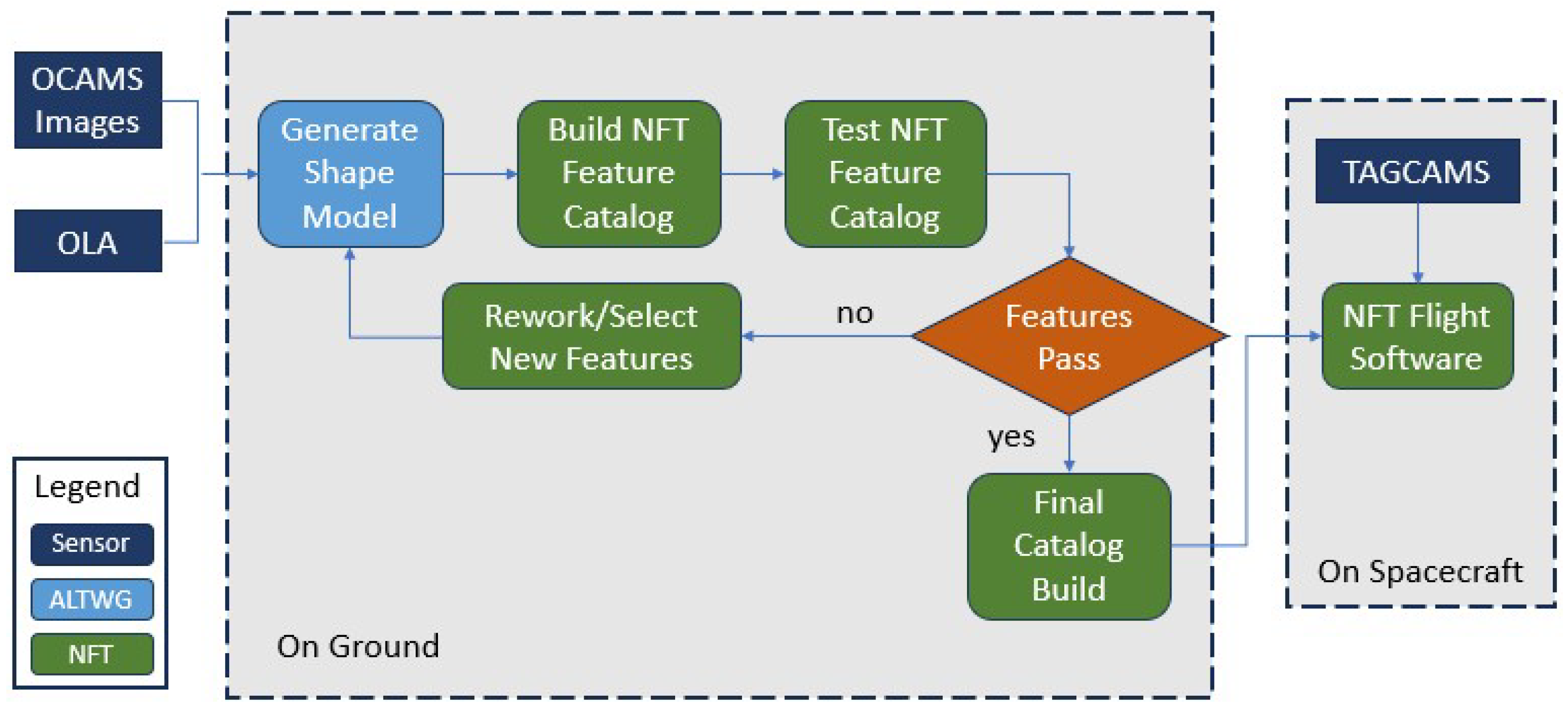
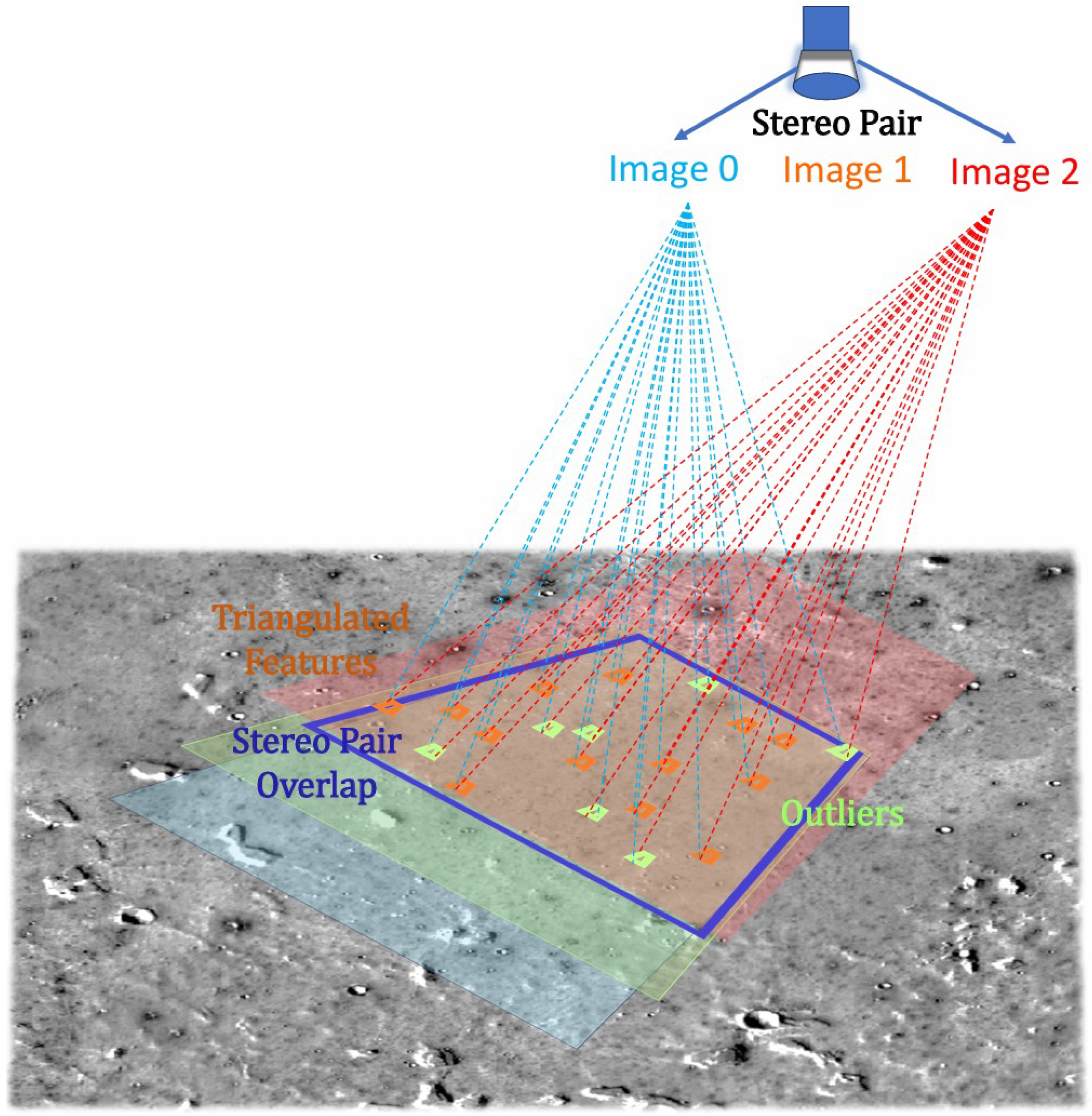

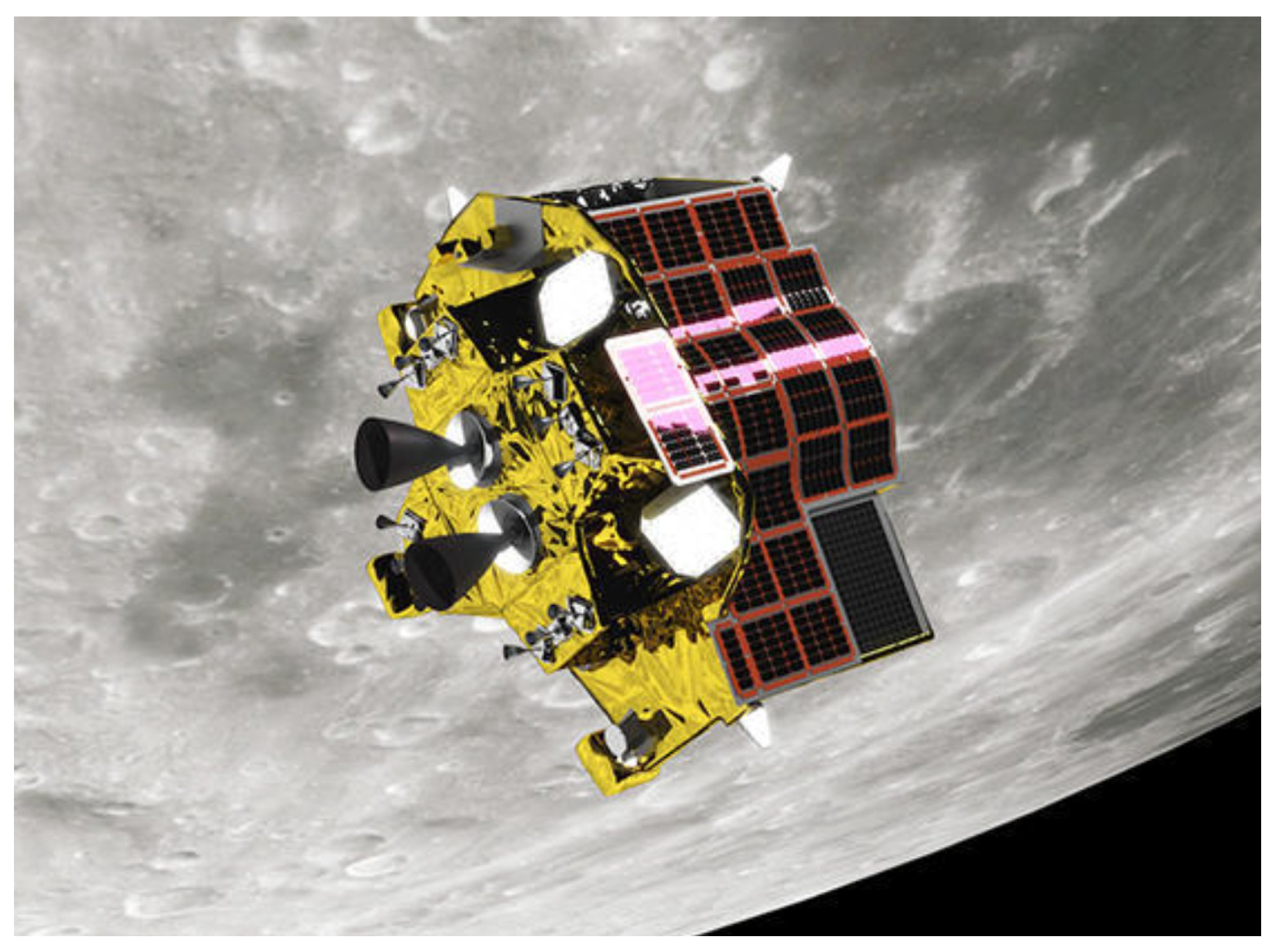
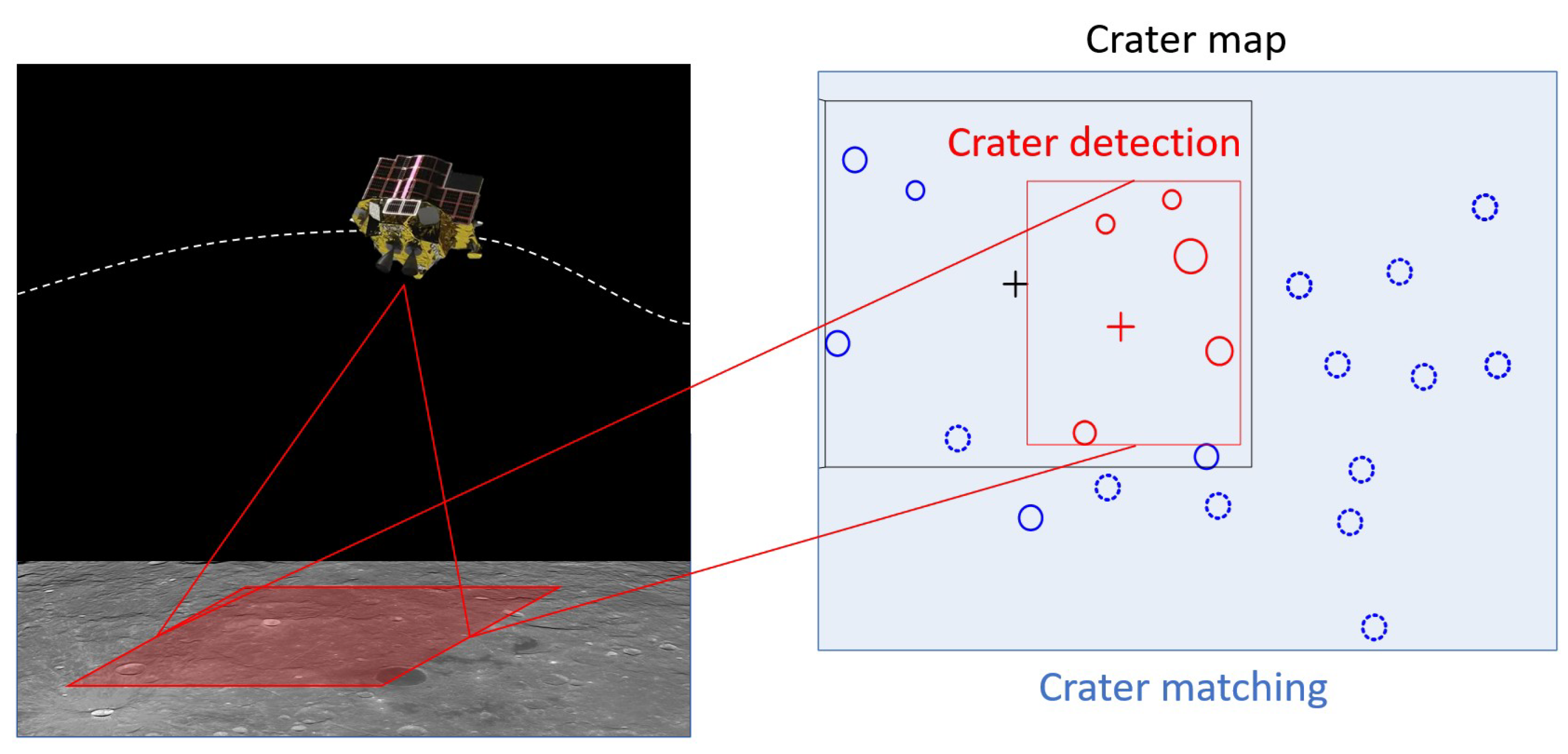
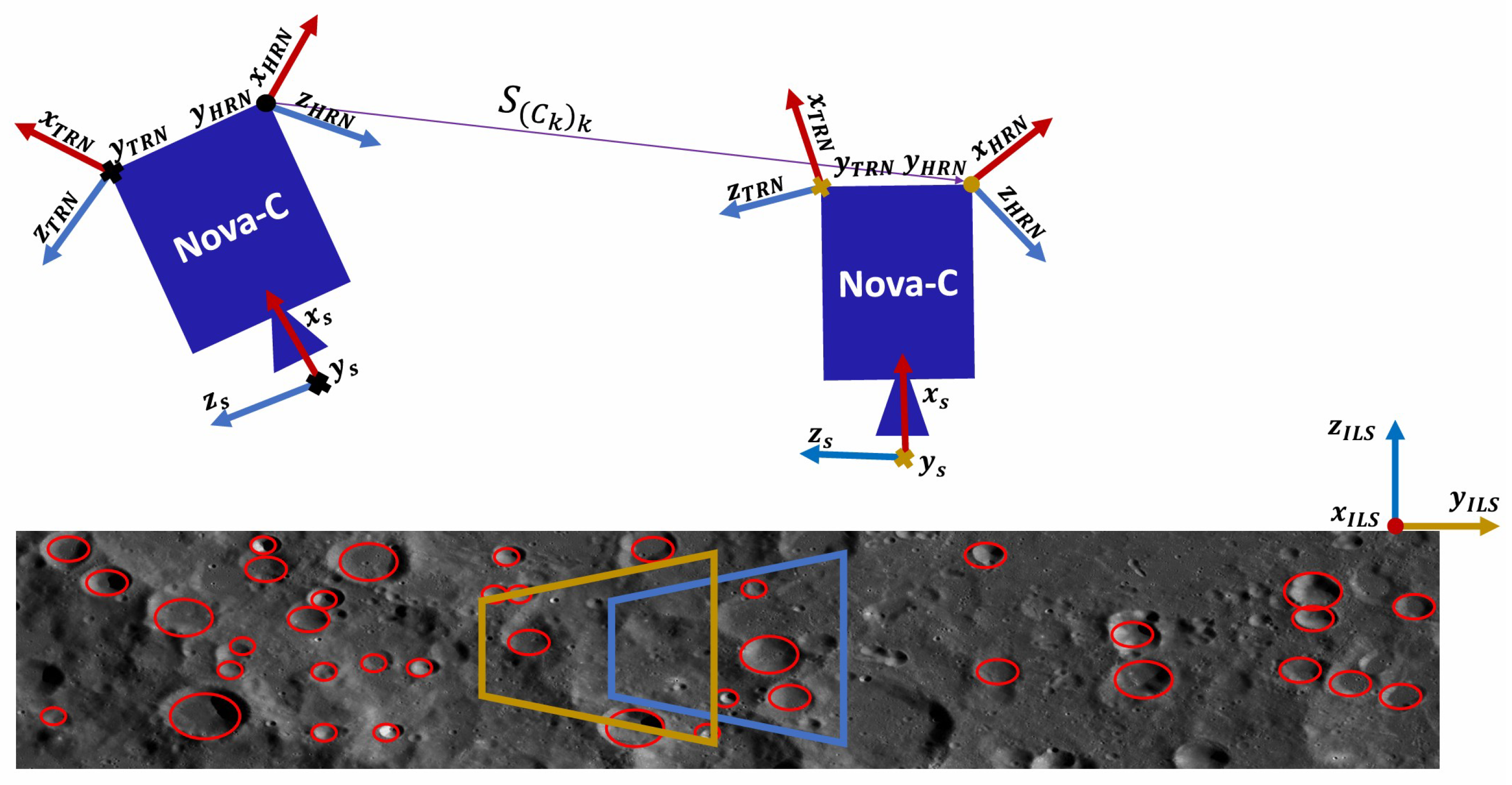

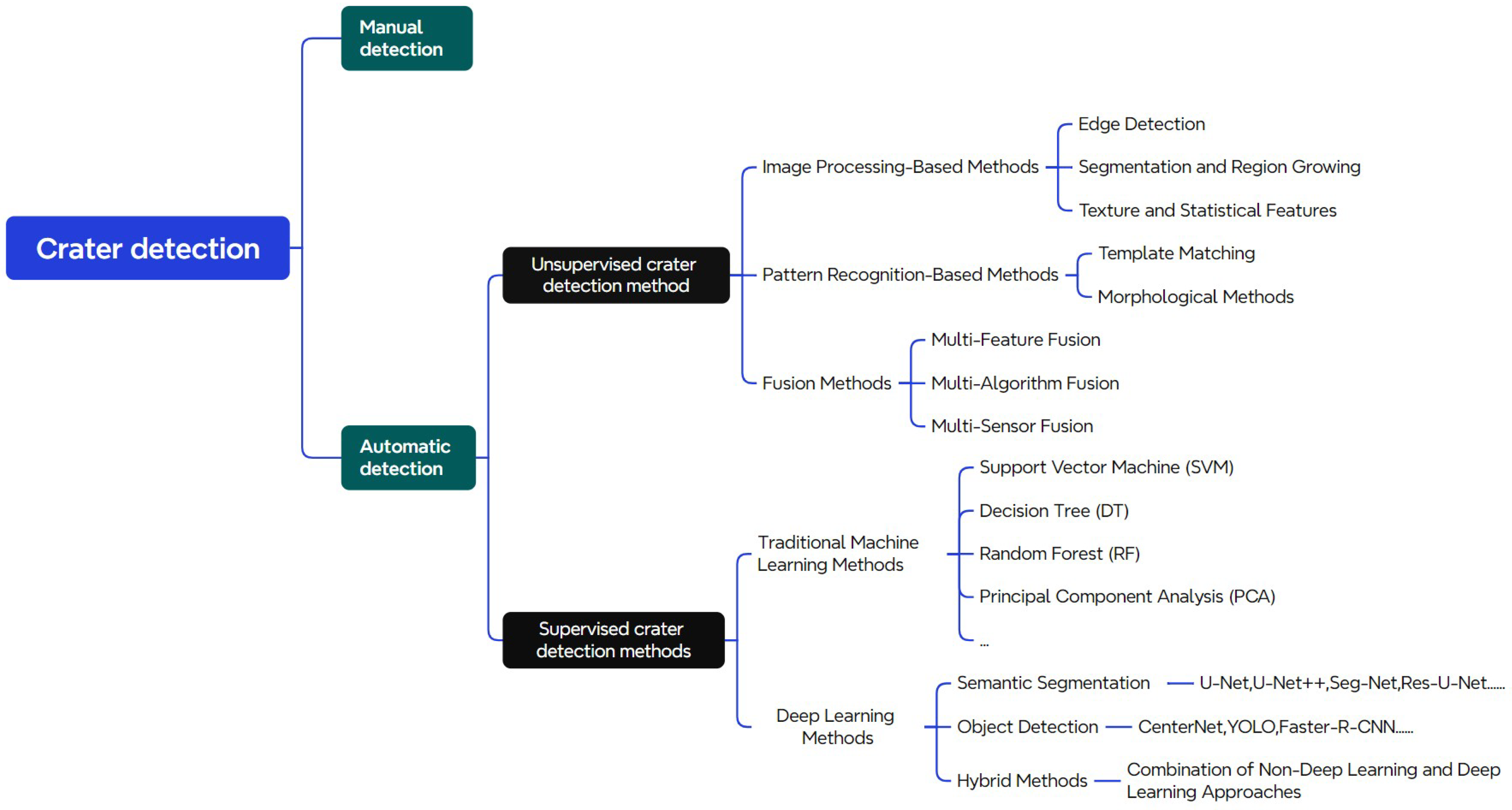
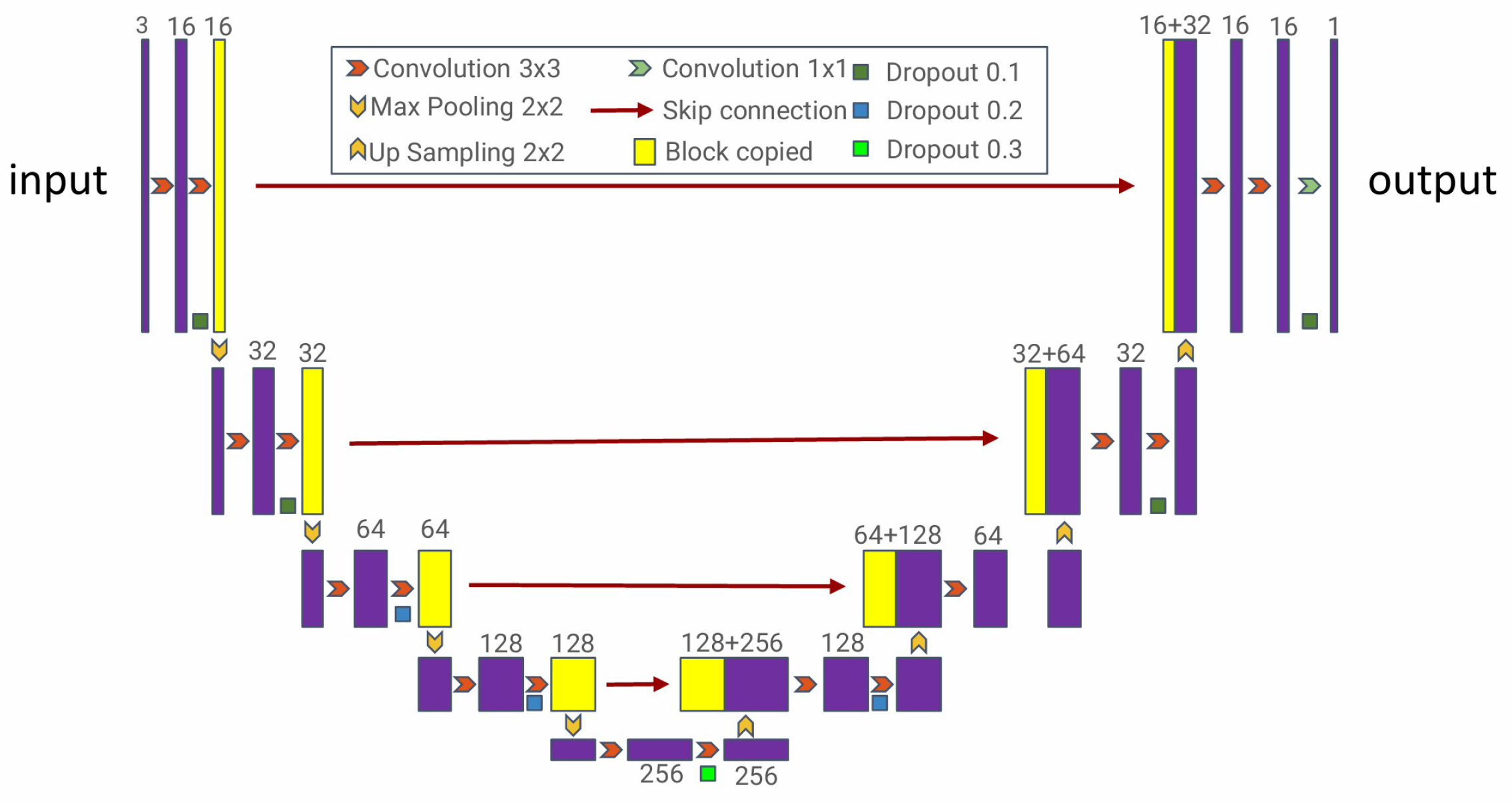



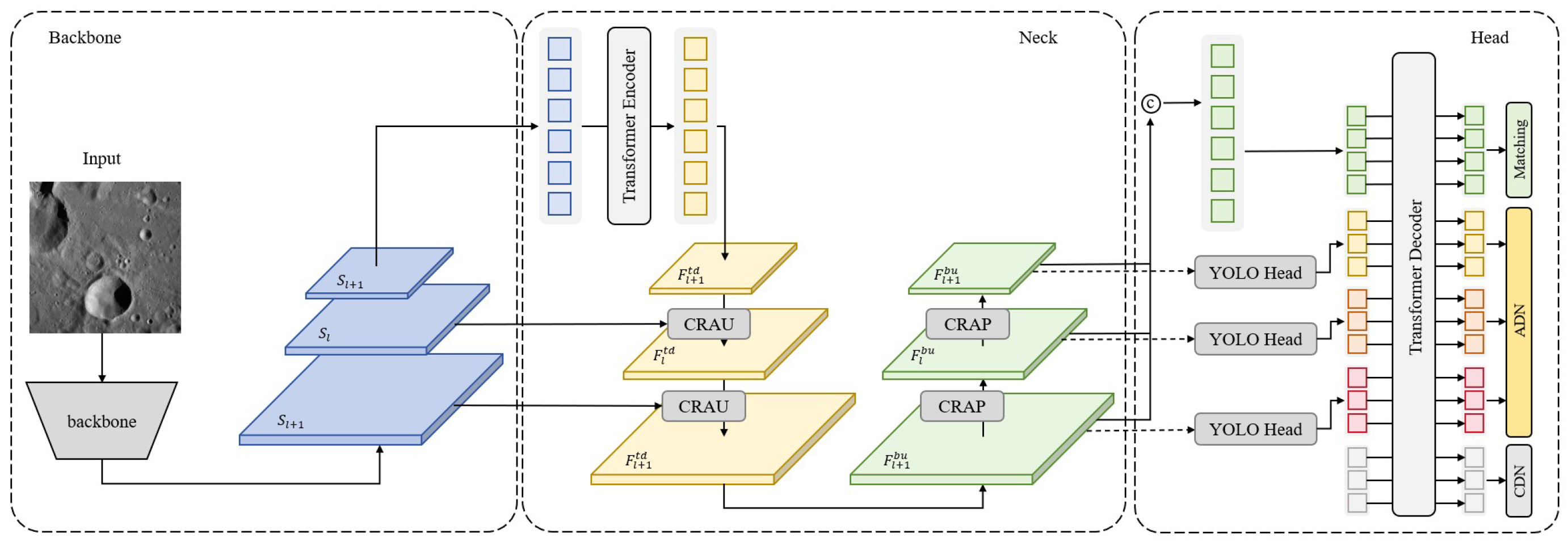

| Celestial Body | Year | Country (Agency) | Mission (Probe) | Main Instruments | Main Contributions |
|---|---|---|---|---|---|
| Moon | 1966–1967 | USA (NASA) | Lunar Orbiter 1–5 | Dual-lens camera system (up to 2 m; typical global coverage 60 m) | First systematic lunar orbital imaging; supported Apollo landing site selection; acquired medium/low-res global imagery. |
| 1994 | Clementine | UV-visible multispectral camera (200 m); NIR CCD (150–500 m); LiDAR (100 m); high-res camera (7–20 m) | Global multiband imagery and terrain data; established lunar control network; 100 m resolution global DOM. | ||
| 2009 | LRO | LOLA (10 m vertical accuracy); LROC NAC (0.5 m)/WAC (100 m); Diviner radiometer (200–400 m) | 59 m global DEM; 100 m DIM; 5 m DTM in key areas; improved terrain accuracy. | ||
| 2003 | ESA | SMART-1 | HRSC (2.3 m at 250 km); Shortwave Infrared Spectrometer (SIR) (300 m); LIDAR; X-ray/IR spectrometers | High-resolution lunar surface images; revealed terrain and mineral distribution. | |
| 2007 | Japan (JAXA) | Kaguya | Laser Altimeter (LALT); Terrain Camera (TC) (10 m); Multiband Imager | Acquired high-res imagery and TC-derived DEM (horizontal resolution 60–100 m); generated DEM and DIM products. | |
| 2008–2023 | India | Chandrayaan-1/2/3 | Chandrayaan-1: Terrain Mapping Camera (TMC-1, 5 m), Hyperspectral Imager (M3), and X-ray Spectrometer (C1XS). Chandrayaan-2: Orbiter High-Resolution Camera (OHRC, 0.25 m), Terrain Mapping Camera-2 (TMC-2, 5 m), Dual-Frequency Synthetic Aperture Radar (SAR), and Infrared Spectrometer. Chandrayaan-3: Vision Navigation Camera and Laser Altimeter and Velocimeter. | Chandrayaan-1 generated 5 m DOM and mineral spectral data to support comprehensive lunar mapping and resource surveys. Chandrayaan-2 provided high-precision data for hazard identification and image navigation feature library construction by generating 0.28 m DOM and DEM through OHRC multi-angle stereo imaging. Chandrayaan-3 achieved the first soft landing near the lunar south pole, captured full-sequence visual imagery during descent, and validated the performance of the vision-based navigation and hazard avoidance system. | |
| 2007–2024 | China | Chang’e 1–6 | Chang’e-1: Equipped with a CCD stereo camera (120 m) and a laser altimeter (5 m vertical accuracy); Chang’e-2 is equipped with a CCD stereo camera (7 m) and a laser altimeter (5 m vertical accuracy); Chang’e-3/4 carried a panoramic camera, navigation camera (NavCam) (1–2 m), landing camera (1.3 m), and ground-penetrating radar; Chang’e-5/6 carried a lunar surface camera (1 m) and sampling devices. | Chang’e-1 generated global 120 m DIM and 500 m DEM products. Chang’e-2 generated 7 m DIM and 20 m DEM products. Chang’e-3 to Chang’e-6 acquired high-resolution imagery of local landing sites. Accomplished soft landing, surface exploration, and sample return missions, providing multisource remote sensing data to support image-based navigation and geomorphological analysis. | |
| Mars | 1997 | USA (NASA) | MGS | MOC (1.5–12 m NA; 240 m WA); MOLA (1 m vertical, 300 m footprint) | Provided Mars terrain data; supported climate and water studies. |
| 2005 | MRO | HiRISE (0.25–0.5 m); CTX (6 m); CRISM (18–36 m) | Detailed Mars surface imagery; advanced mineral/water composition analysis. | ||
| 2020 | Mars 2020 (Perseverance) | NavCam (0.33 m/pixel at 1 m); HazCam; Mastcam-Z (0.7 mm–3.3 cm/pixel); Ground-Penetrating Radar (GPR) | <5 m landing accuracy; 0.5 m DTM and 25 cm imagery; Mastcam-Z: 0.7 mm–3.3 cm detail scale. | ||
| 2003 | ESA | Mars Express | HRSC (10 m global, down to 2 m); IR mineral spectrometer (300 m–4.8 km) | High-resolution Mars images; revealed water-related mineral composition. | |
| 2020 | China | Tianwen-1 | High-Resolution Imaging Camera (HiRIC) (2.5 m); Medium-Resolution Camera (100 m); GPR (100 m depth, <10 m vertical) | High-res Mars imagery and radar; enabled geology and water research. | |
| Mercury | 1973 | USA (NASA) | Mariner 10 | IR radiometer; UV spectrometer; TV imaging system (100 m, 1–2 km global) | First high-res Mercury images; revealed craters and surface structures. |
| 2004 | MESSENGER | MDIS (10 m, 250 m global); MLA (<1 m vertical accuracy); UV/Vis/NIR/X-ray spectrometers | High-res images; precise Mercury terrain data. | ||
| 2018 | ESA | BepiColombo | LALT (1 m vertical accuracy); thermal IR spectrometer; radiometers; HRIC (5 m), STC (50 m), VIHI (100–200 m) | Studied Mercury’s geology, magnetosphere, and atmosphere. | |
| Asteroid | 1996 | USA (NASA) | NEAR Shoemaker | NIR spectrometer; MDIS | First asteroid orbiting mission; surface imagery of Eros with geologic features. |
| 2007 | Dawn | Framing camera; gamma/neutron/UV spectrometers | High-res images of Vesta and Ceres; terrain and crater mapping. | ||
| 2016 | OSIRIS-REx | Optical Camera System (PolyCam, MapCam, SamCam), LALT, VIS/IR Spectrometer, Thermal IR Spectrometer, X-ray Imaging Spectrometer, Touch-and-Go Sampler | Generated global 5 cm DIM; conduct mineral and thermal remote sensing; acquire 7–10 cm images and return asteroid surface samples. | ||
| 2014 | Japan (JAXA) | Hayabusa2 | Optical Navigation Camera (ONC-T/W1/W2), Near-Infrared Spectrometer, Sampling Device, MASCOT Lander, MINERVA-II Lander | Generated global 0.5–0.7 m resolution DIM, 5–10 cm DTM and orthoimages of landing site, and 4.6 mm ultra-high-res close-range images during descent; provided high-precision remote sensing data for visual navigation and geomorphological evolution studies. |
| Mission Name | Launch Date | Country (Agency) | Target Body | Navigation Landmark |
|---|---|---|---|---|
| NEAR | 17 February 1996 | USA (NASA) | 433 Eros | Craters |
| Hayabusa2 | 3 December 2014 | Japan (JAXA) | Ryugu | Target Marker |
| OSIRIS-REx | 8 September 2016 | USA (NASA) | Bennu | Feature Points |
| Mars 2020 | 30 July 2020 | USA (NASA) | Mars | Feature Points |
| SLIM | 7 September 2023 | Japan (JAXA) | Moon | Craters |
| Nova-C (IM-1) | 15 February 2024 | USA (Intuitive Machines) | Moon | Feature Points |
| Nova-C (IM-2) | 26 February 2025 | USA (Intuitive Machines) | Moon | Craters |
| Navigation Method | Representative Missions | Landing Accuracy |
|---|---|---|
| Traditional Navigation | Apollo; Chang’e-3; Chang’e-4; Chang’e-5 | Hundreds of meters to several kilometers |
| Image-Based Navigation | Mars 2020; SLIM; Blue Ghost | Tens to hundreds of meters |
| Category | Method | Advantages | Disadvantages |
|---|---|---|---|
| Image Processing -Based Methods | Edge Detection | (1) Simple algorithm and easy to implement. (2) Effective for detecting craters with clear edges. | (1) Sensitive to noise, prone to false detection. (2) Poor performance in cases of indistinct edges or complex terrain. (3) High computational cost, especially for high-resolution images. |
| Segmentation and Region Growing | (1) Uses shadow information to reduce false positives to some extent. (2) Performs well for circular crater detection. | (1) Very sensitive to lighting conditions; illumination changes affect results. (2) Requires accurate lighting models; otherwise, large errors occur. (3) Cannot detect craters without visible shadows. | |
| Texture and Statistical Features | (1) Capable of handling complex terrain, strong adaptability. (2) Improves accuracy via multifeature analysis. | (1) Computationally intensive and slow processing. (2) Complex feature extraction algorithms requiring careful design. (3) Poor detection of small-sized craters. | |
| Pattern Recognition -Based Methods | Template Matching | (1) Simple and easy to implement. (2) Good performance for craters with fixed shape and size. | (1) Unable to detect craters with variable shapes and sizes. (2) High computational load, especially for large images. (3) Sensitive to noise, prone to false detection. |
| Morphology-based Methods | (1) Incorporates geological knowledge, improving detection accuracy. (2) Can handle complex terrain and lighting conditions. | (1) Complex rule design requiring extensive prior knowledge. (2) Poor generalization; rules may vary across regions. (3) High computational cost and slow processing. | |
| Fusion Methods | Multifeature Fusion | (1) Integrates multiple features, improving accuracy and robustness. (2) Can handle complex terrain and illumination. | (1) Complex feature extraction and fusion algorithms needing significant resources. (2) Requires suitable fusion strategies for different feature types. |
| Multi-algorithm Fusion | (1) Leverages algorithm complementarity to improve robustness and accuracy. (2) Capable of detecting diverse types of craters. | (1) Fusion strategy design is complex and requires careful tuning. (2) High computational load and slower processing. (3) Needs large training and testing datasets to validate fusion performance. | |
| Multisensor Fusion | (1) Provides multimodal information, improving reliability and accuracy. (2) Handles high-precision detection tasks in complex environments. | (1) Requires multiple sensors, increasing hardware cost. (2) Complex data fusion algorithms requiring substantial computation. (3) Difficulties in synchronizing and calibrating different sensor data. |
| Characteristic | Semantic Segmentation | Object Detection |
|---|---|---|
| Output Type | Pixel-level classification, providing a probability or label for each pixel belonging to a crater. | Bounding boxes, including crater center and rectangular boundaries. |
| Application Scenario | Provides detailed crater morphology and structural information; suitable for high-precision map generation and scientific analysis. | Rapid identification and annotation of crater positions and sizes; suitable for real-time detection and navigation. |
| Algorithm Complexity | Generally higher; requires more computational resources and time, e.g., U-Net. | Generally lower; fast inference speed, suitable for real-time applications. Examples include YOLO and SSD. |
| Advantages | Effectively handles complex crater features and overlapping craters. | Directly provides position and size information of craters. |
| Post-processing | Requires extensive post-processing to accurately determine crater boundaries and sizes. | Does not require extensive post-processing. |
| Challenges | May not provide accurate location and size information without additional processing. | Limited annotated datasets; reproducing results can be challenging. |
| Training Data Requirements | Requires large amounts of pixel-level labeled training data; high labeling cost. | Requires large quantities of bounding-box annotated data; relatively lower labeling cost. |
| Robustness | Sensitive to image resolution and noise; robustness can be improved through multiscale training and data augmentation. | May experience degraded accuracy with changes in resolution and noise. |
| Applications | High-precision lunar surface map generation. | Real-time navigation and landing hazard avoidance for lunar probes; automatic crater annotation for large-scale lunar imagery. |
| Model Training and Optimization | Common models include U-Net, SegNet; trained and optimized using data augmentation and large-scale pixel-labeled datasets. | Common models include R-CNN, Fast R-CNN, Faster R-CNN, YOLO, SSD; trained and optimized using large annotated datasets. |
| Real-time Performance | Low real-time performance; suited for applications requiring high analytical precision, such as scientific research and geological monitoring. | Suitable for applications with high real-time requirements, such as probe navigation and obstacle avoidance. |
| Accuracy and Detail | Requires extra steps during post-processing to achieve comparable accuracy. | Provides more precise position and size information. |
| Matching Type | With Prior Pose | Without Prior Pose |
|---|---|---|
| Search Scope | Local region, based on known camera position prediction. | Global matching, requires searching the entire database. |
| Computational Complexity | Low, fast matching speed. | High, requires global search with large computation load. |
| Matching Accuracy | High, depends on initial navigation state. | Relatively high, but depends on the stability of invariants. |
| Application Scenario | Camera position is roughly known, used during navigation. | Camera lost, and navigation state is completely unknown. |
Disclaimer/Publisher’s Note: The statements, opinions and data contained in all publications are solely those of the individual author(s) and contributor(s) and not of MDPI and/or the editor(s). MDPI and/or the editor(s) disclaim responsibility for any injury to people or property resulting from any ideas, methods, instructions or products referred to in the content. |
© 2025 by the authors. Licensee MDPI, Basel, Switzerland. This article is an open access article distributed under the terms and conditions of the Creative Commons Attribution (CC BY) license (https://creativecommons.org/licenses/by/4.0/).
Share and Cite
Lin, X.; Li, T.; Hua, B.; Li, L.; Zhao, C. A Review of Deep Space Image-Based Navigation Methods. Aerospace 2025, 12, 789. https://doi.org/10.3390/aerospace12090789
Lin X, Li T, Hua B, Li L, Zhao C. A Review of Deep Space Image-Based Navigation Methods. Aerospace. 2025; 12(9):789. https://doi.org/10.3390/aerospace12090789
Chicago/Turabian StyleLin, Xiaoyi, Tao Li, Baocheng Hua, Lin Li, and Chunhui Zhao. 2025. "A Review of Deep Space Image-Based Navigation Methods" Aerospace 12, no. 9: 789. https://doi.org/10.3390/aerospace12090789
APA StyleLin, X., Li, T., Hua, B., Li, L., & Zhao, C. (2025). A Review of Deep Space Image-Based Navigation Methods. Aerospace, 12(9), 789. https://doi.org/10.3390/aerospace12090789


_Zhu.png)

